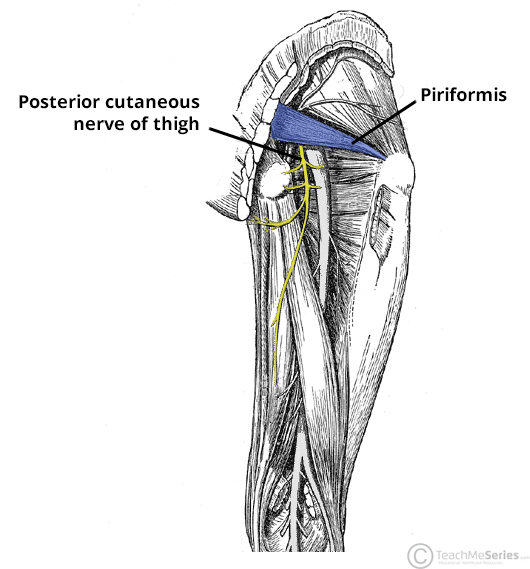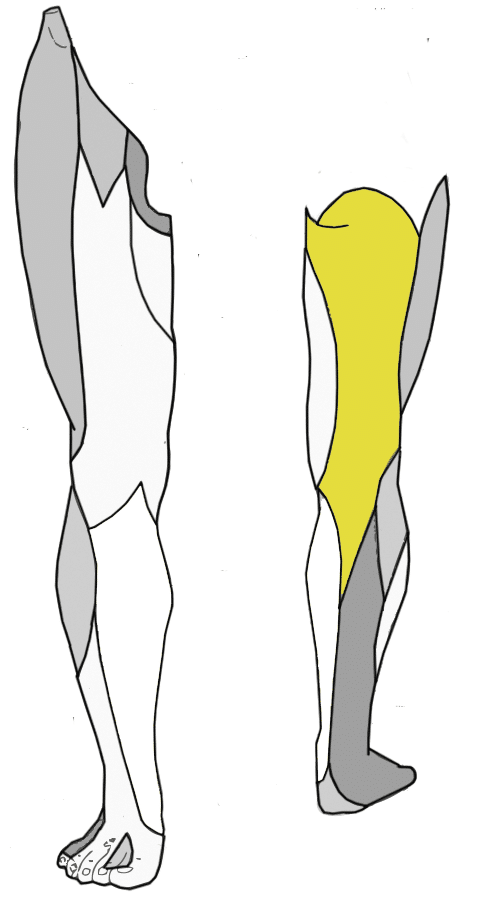The posterior cutaneous nerve of thigh (posterior femoral cutaneous nerve) is a sensory nerve of the lower limb that arises from the sacral plexus.
It supplies sensation to the lower medial quadrant of the gluteal region and the posterior thigh.
Course
The posterior cutaneous nerve of thigh arises from the sacral plexus in the pelvis. It is formed from the posterior rami (divisions) of spinal nerves S1 and S2, and the anterior rami of spinal nerves S2 and S3.
After its origin, the nerve leaves the pelvic region via the greater sciatic foramen. It enters the gluteal region inferior to the piriformis muscle, accompanied by the inferior gluteal artery.
It descends down the lower limb, underneath the gluteus maximus and the superficial to the long head of the biceps femoris. Along its course, it provides sensory branches to the overlying skin of the posterior thigh.
The posterior cutaneous nerve of thigh terminates by dividing into several small branches at the level of the mid-calf.

Fig 1 – Posterior cutaneous nerve of thigh enters the gluteal region inferior to the piriformis muscle.
Sensory Function
The posterior cutaneous nerve of thigh supplies innervation to:
- Lower medial quadrant of gluteal region and adjacent perineum – via a gluteal branch (inferior cluneal nerve) and a perineal branch.
- Posterior aspect of the thigh and knee joint – via direct cutaneous branches

Fig 2 – The posterior cutaneous nerve of thigh provides cutaneous innervation to the lower medial gluteal quadrant and the posterior thigh